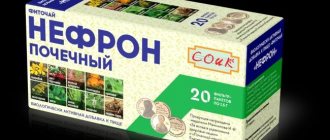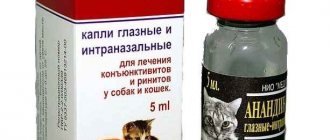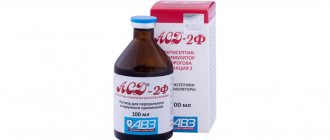Write a review
Reviews: 0
Manufacturers: Borshchagovsky Chemical and Pharmaceutical Plant, Grindeks
Active ingredients
- Cephalexin
Disease class
- Purulent and unspecified otitis media
- Acute upper respiratory tract infection of multiple and unspecified localization
- Infectious myositis
- Tendon sheath abscess
- Other infectious (teno)synovitis
- Abscess of the bursa
- Other infectious bursitis
- Osteomyelitis
- Gonococcal infection
- Cystitis
- Inflammatory disease of the uterus, other than the cervix
- Gonococcal inflammatory diseases of the female pelvic organs
Clinical and pharmacological group
- Not indicated. See instructions
Pharmacological action
- Antibacterial
- Bactericidal
Pharmacological group
- Cephalosporins
Capsule Cefalexin
Instructions for medical use of the drug
Description of pharmacological action
First generation cephalosporin antibiotic. It has a bactericidal effect and disrupts the synthesis of the cell wall of microorganisms. Resistant to lactamases. Has a wide spectrum of action. Active against gram-positive microorganisms - Staphylococcus spp., (including penicillinase-producing and non-penicillinase-producing strains of Staphylococcus aureus, penicillin-sensitive strains of Staphylococcus epidermidis), Streptococcus spp. (including Streptococcus pneumoniae, Streptococcus pyogenes), Corynebacterium diphtheriae; gram-negative microorganisms - Neisseria meningitidis, Neisseria gonorrhoeae, Shigella spp., Salmonella spp., Escherichia coli, Klebsiella spp. (including Klebsiella pneumoniae), Moraxella catarrhalis, Proteus mirabilis; Treponema spp., radiant fungi. Ineffective against Pseudomonas aeruginosa, Proteus spp. (indole-positive strains), Morganella morganii, Mycobacterium tuberculosis, Enterococcus faecalis, Haemophilus spp., Enterobacter spp., Serratia spp., Pseudomonas spp., Aeromonas spp., Acinetobacter spp., methicillin-resistant strains, anaerobic microorganisms. Resistant to penicillinase of staphylococci, but destroyed by cephalosporinase of gram-negative microorganisms.
Indications for use
- infections of the upper and lower respiratory tract (pharyngitis, otitis media, sinusitis, tonsillitis, bronchitis, acute and exacerbation of chronic pneumonia, bronchopneumonia, empyema and lung abscess); - infections of the genitourinary system (pyelonephritis, cystitis, urethritis, prostatitis, epididymitis, endometritis, gonorrhea, vulvovaginitis); - infections of the skin and soft tissues (furunculosis, abscess, phlegmon, pyoderma, lymphadenitis, lymphangitis); - infections of bones and joints (including osteomyelitis).
Release form
capsules 250 mg; bottle (bottle) 30; capsules 250 mg; blister 8 cardboard pack 2; capsules 0.25 g; blister 10; capsules 500 mg; blister 8 cardboard pack 2; capsules 250 mg; contour packaging 10 cardboard pack 3; capsules 250 mg; contour packaging 10 cardboard pack 1; capsules 250 mg; contour packaging 10 cardboard pack 2; capsules 250 mg; contour packaging 10 cardboard pack 3; capsules 250 mg; polymer jar (jar) 30 cardboard pack 1; capsules 250 mg; polymer bottle (bottle) 30 cardboard pack 1; capsules 250 mg; contour packaging 10 cardboard pack 3; capsules 250 mg; polymer bottle (bottle) 30 cardboard pack 1; capsules 250 mg; polymer jar (jar) 30 cardboard pack 1; capsules 250 mg; dark glass jar (jar) 30 cardboard pack 1; capsules 250 mg; plastic bag (bag) 1 kg; capsules 250 mg; plastic bag (bag) 1 kg; capsules 250 mg; plastic bag (bag) 5 kg; capsules 250 mg; plastic bag (bag) 5 kg; capsules 250 mg; plastic bag (bag) 10 kg; capsules 250 mg; plastic bag (bag) 10 kg; Composition: 1 capsule contains cephalexin 250 mg; in bottles of 30 pcs.
Pharmacodynamics
First generation cephalosporin antibiotic. It has a bactericidal effect and disrupts the synthesis of the cell wall of microorganisms. Resistant to lactamases. Has a wide spectrum of action. Active against gram-positive microorganisms - Staphylococcus spp., (including penicillinase-producing and non-penicillinase-producing strains of Staphylococcus aureus, penicillin-sensitive strains of Staphylococcus epidermidis), Streptococcus spp. (including Streptococcus pneumoniae, Streptococcus pyogenes), Corynebacterium diphtheriae; gram-negative microorganisms - Neisseria meningitidis, Neisseria gonorrhoeae, Shigella spp., Salmonella spp., Escherichia coli, Klebsiella spp. (including Klebsiella pneumoniae), Moraxella catarrhalis, Proteus mirabilis; Treponema spp., radiant fungi. Ineffective against Pseudomonas aeruginosa, Proteus spp. (indole-positive strains), Morganella morganii, Mycobacterium tuberculosis, Enterococcus faecalis, Haemophilus spp., Enterobacter spp., Serratia spp., Pseudomonas spp., Aeromonas spp., Acinetobacter spp., methicillin-resistant strains, anaerobic microorganisms. Resistant to penicillinase of staphylococci, but destroyed by cephalosporinase of gram-negative microorganisms.
Pharmacokinetics
After oral administration, it is quickly and well absorbed. Bioavailability is 90-95%; food intake slows down absorption, but does not affect its completeness. The time to reach Cmax after oral administration of 0.25, 0.5 or 1 g is 1 hour, the Cmax value is 9, 18 and 32 mcg/ml, respectively. The therapeutic concentration is maintained for 4-6 hours. Communication with plasma proteins is 10-15%. Vd - 0.26 l/kg. Distributed relatively evenly in various tissues and body fluids: lungs, liver, heart, kidneys, bile, gall bladder, bones, joints, respiratory tract. It penetrates poorly through the unchanged BBB. Passes through the placenta, is excreted in small quantities in breast milk, and is found in amniotic fluid. Not metabolized. T1/2 - 0.9-1.2 hours. Total clearance - 380 ml/min. Excreted by the kidneys - 70-89% unchanged (2/3 - by glomerular filtration, 1/3 - by tubular secretion); with bile - 0.5%. Renal clearance - 210 ml/min. If the excretory function of the kidneys is impaired, the concentration in the blood increases, and the time of excretion by the kidneys lengthens, T1/2 after oral administration is 5-30 hours. It is moderately excreted using hemodialysis, well - using peritoneal dialysis.
Use during pregnancy
The use of the drug during pregnancy and lactation is possible only if the expected benefit to the mother outweighs the potential risk to the fetus. If it is necessary to prescribe the drug during lactation, breastfeeding should be stopped.
Use for renal impairment
For adult patients with impaired renal function, the daily dose is reduced taking into account the CC value: with CC 5-20 ml/min, the maximum daily dose is 1.5 g/min; with CC less than 5 ml/min - 0.5 g/ The daily dose is divided into 4 doses.
Contraindications for use
- children under 3 years of age (for dosage form - capsules); - hypersensitivity (including to other beta-lactam antibiotics). With caution - renal failure, pseudomembranous colitis (history), pregnancy, lactation, infancy (up to 6 months - for suspension).
Side effects
Allergic reactions: rash, urticaria, Quincke's edema, erythema, rarely - eosinophilia, toxic epidermal necrolysis, Stevens-Johnson syndrome, anaphylactic shock. From the digestive system: abdominal pain, dry mouth, anorexia, nausea, vomiting, diarrhea, toxic hepatitis, cholestatic jaundice, increased activity of liver transaminases and alkaline phosphatase, intestinal candidiasis, oral cavity, pseudomembranous enterocolitis. From the nervous system: dizziness, weakness, headache, agitation, hallucinations, convulsions. From the genitourinary system: interstitial nephritis, itching of the genitals and anus, vaginitis, vaginal discharge, genital candidiasis. From the hematopoietic organs: leukopenia, neutropenia, thrombocytopenia. From the musculoskeletal system: arthralgia, arthritis. Laboratory indicators: increase in prothrombin time.
Directions for use and doses
Inside, 30-60 minutes before meals, washed down with water. The average dose for adults and children over 10 years of age is 250-500 mg every 6 hours. The daily dose of the drug should be at least 1-2 g, if necessary, it can be increased to 4 g. The duration of treatment is 7-14 days. For infections caused by group A beta-hemolytic streptococcus, the minimum duration of treatment is 10 days. For adult patients with impaired renal function, the daily dose is reduced taking into account the CC value: with CC 5-20 ml/min, the maximum daily dose is 1.5 g/min; with CC less than 5 ml/min - 0.5 g/ The daily dose is divided into 4 doses. For children under 10 years of age, the drug is recommended to be prescribed in the form of an oral suspension. For body weight less than 40 kg, the average daily dose is 25-100 mg/kg body weight; frequency of administration - 4 For otitis media - dose 75 mg/kg/, frequency of administration - 4 For streptococcal pharyngitis, infections of the skin and soft tissues, frequency of administration - 2 For severe infections, the daily dose can be increased to 100 mg/kg body weight, and frequency of administration - 2 reception - up to 6 times / Preparation of the suspension: add water to the bottle up to the risk and shake well. The prepared suspension is stable at room temperature for 14 days. The suspension must be shaken before each use. 5 ml of the finished suspension contains 250 mg of cephalexin.
Overdose
Symptoms: vomiting, nausea, epigastric pain, diarrhea, hematuria. Treatment: activated charcoal (more effective than lavage), maintaining airway patency, monitoring vital signs, blood gases, electrolyte balance.
Interactions with other drugs
When used simultaneously with furosemide, ethacrynic acid, nephrotoxic antibiotics (for example, aminoglycosides), the risk of kidney damage increases. Salicylates and indomethacin slow down the elimination of cephalexin. Cephalexin reduces the prothrombin index and enhances the effect of indirect anticoagulants.
Special instructions for use
Patients with a history of allergic reactions to penicillins and carbapenems may have increased sensitivity to cephalosporin antibiotics. During treatment with cephalexin, a positive direct Coombs test is possible, as well as a false positive urine test for glucose. During the treatment period, it is not recommended to consume ethanol. In patients with impaired renal function, accumulation is possible (adjustment of the dosage regimen is required). In staphylococcal infections, cross-resistance exists between cephalosporins and isoxazolylpenicillins.
Storage conditions
List B.: At room temperature.
Best before date
48 months
ATX classification:
J Antimicrobials for systemic use
J01 Antimicrobials for systemic use
J01D Other beta-lactam antibiotics
J01DB First generation cephalosporins
J01DB01 Cefalexin
Use of the drug Cephalexin
Inside, regardless of food intake. A single dose of cephalexin for adults is 0.25–0.5 g, a daily dose is 1–2 g. Children are prescribed at a dose of 25–50 mg/kg/day. In case of severe infection, the dose for adults can be increased to a maximum of 4 g/day, for children - up to 100 mg/kg/day. The daily dose is divided into 4 doses. The duration of treatment is usually 7–14 days; for streptococcal infections, the duration of therapy is at least 10 days. In case of renal failure, the dose should be reduced.
Similar drugs:
- Augmentin Oral tablets
- Tea tree DN Ointment for external use
- Augmentin Powder for suspension for oral administration
- Bactrim Oral suspension
- Dioxydin Mouth rinse solution
- Pancef Oral tablets
- Nifuroxazide (Nifuroxazide) Oral tablets
- Cifran OD Oral tablets
- Pancef Granules for the preparation of suspension for oral administration
- Augmentin ES Powder for oral solution
** The Drug Directory is intended for informational purposes only. For more complete information, please refer to the manufacturer's instructions. Do not self-medicate; Before starting to use Cephalexin, you should consult a doctor. EUROLAB is not responsible for the consequences caused by the use of information posted on the portal. Any information on the site does not replace medical advice and cannot serve as a guarantee of the positive effect of the drug.
Are you interested in the drug Cephalexin? Do you want to know more detailed information or do you need a doctor's examination? Or do you need an inspection? You can make an appointment with a doctor - the Euro lab is always at your service! The best doctors will examine you, advise you, provide the necessary assistance and make a diagnosis. You can also call a doctor at home . Euro lab clinic is open for you around the clock.
** Attention! The information presented in this medication guide is intended for medical professionals and should not be used as a basis for self-medication. The description of the drug Cephalexin is provided for informational purposes and is not intended for prescribing treatment without the participation of a doctor. Patients need to consult a specialist!
If you are interested in any other drugs and medications, their descriptions and instructions for use, information about the composition and form of release, indications for use and side effects, methods of use, prices and reviews of drugs, or you have any other questions and suggestions - write to us, we will definitely try to help you.
Special instructions for the use of the drug Cephalexin
Use with caution in case of impaired renal and liver function, as well as in patients with a history of hypersensitivity reactions to penicillins. There is a possibility of cross-allergy between penicillins and cephalosporins with hypersensitivity to penicillin (approximately 5-10% of patients). Treatment with cephalexin should be discontinued if allergic reactions occur and appropriate therapy should be prescribed. It is not recommended to prescribe during pregnancy in the absence of vital indications (potential teratogenicity has not been sufficiently studied). While taking an antibiotic, a urine test may reveal a false positive reaction to glucose.
List of pharmacies where you can buy Cephalexin:
- Moscow
- Saint Petersburg





